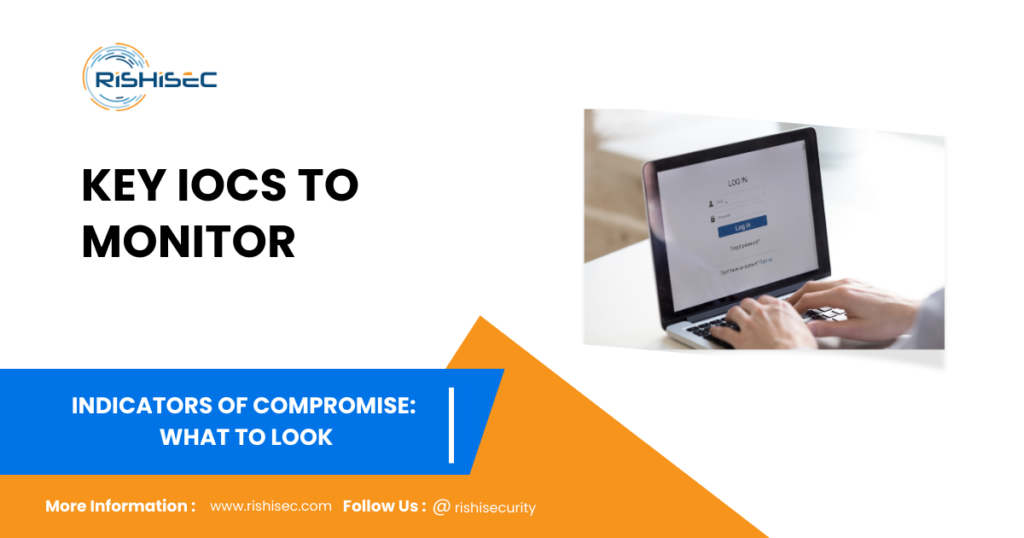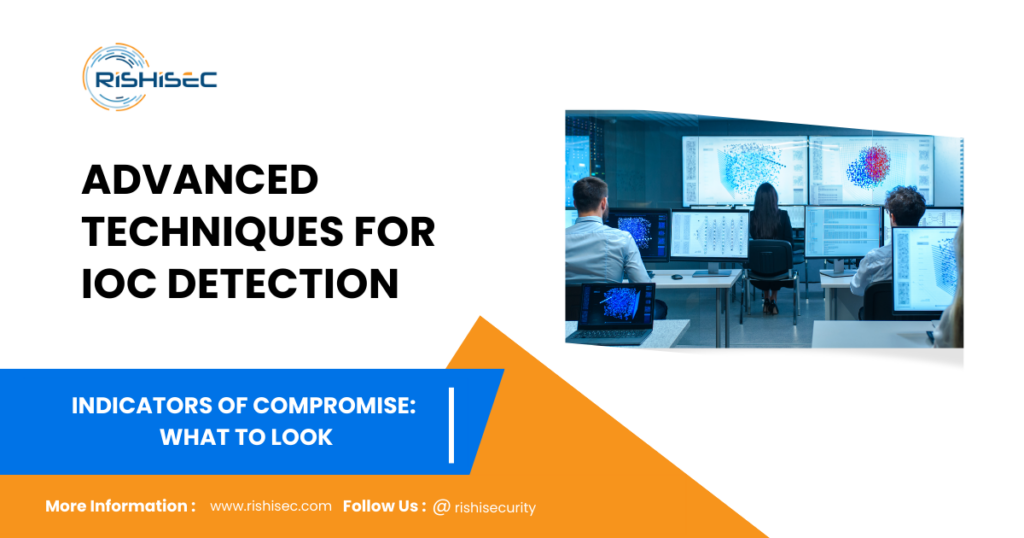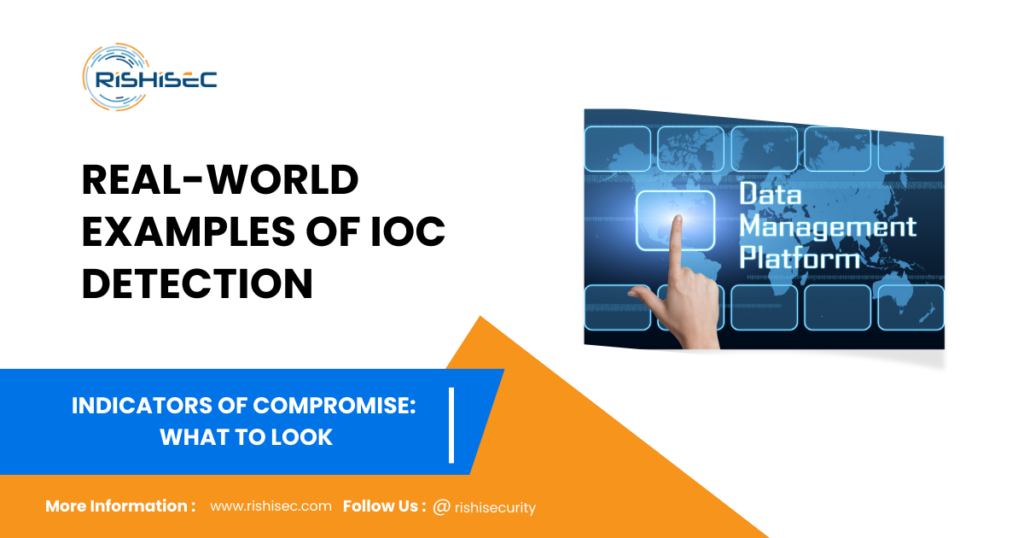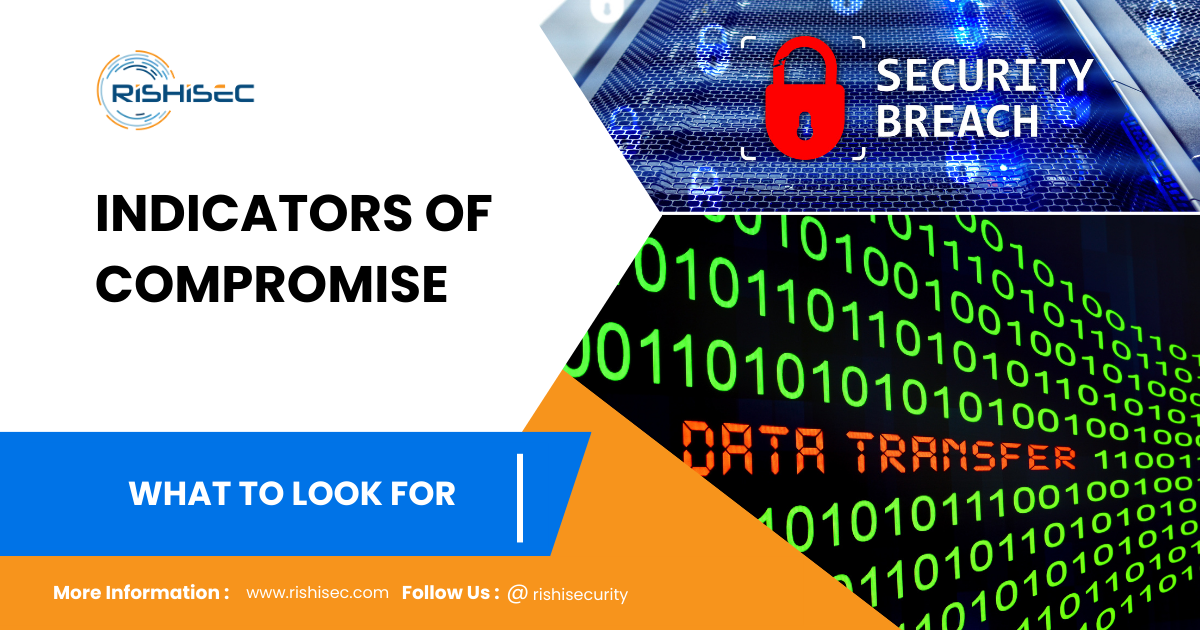Contents
Indicators of Compromise
Indicators of Compromise (IoCs) are the frontline signals cybersecurity professionals rely on to detect malicious activities before they escalate into full-scale attacks. These digital footprints—ranging from suspicious IP addresses to abnormal file changes—offer the earliest warnings of a potential breach. However, the challenge lies in identifying IoCs swiftly and accurately amidst a sea of data. A proactive strategy, underpinned by continuous monitoring and rapid response, is essential to staying ahead of attackers. Understanding and acting on these markers ensures your organization can mitigate threats before they cause irreparable damage, safeguarding both operational continuity and sensitive assets.
Key IoCs to Monitor

Unusual Network Traffic:
One of the most common IoCs is abnormal traffic patterns, particularly large data transfers to unfamiliar IP addresses. This could indicate data exfiltration by cybercriminals. For instance, a sudden increase in outbound traffic, especially during non-business hours, is a red flag.
Suspicious File Changes:
Unexpected file modifications or deletions are strong indicators of compromise. Attackers often tamper with or delete logs to hide their tracks. Keep a close eye on critical system files, configuration changes, and registry edits.
Login Anomalies:
Login attempts from unexpected locations, multiple failed logins, or attempts to access restricted systems can indicate a compromise. Attackers may use brute-force attacks to crack passwords or employ stolen credentials to gain unauthorized access.
Endpoint Detection:
Endpoints are a prime target for attackers. Monitoring for unusual behavior on individual devices, such as unexplained software installations, unauthorized application usage, or connections to suspicious domains, is essential for detecting threats early.
Advanced Techniques for IoC Detection

With the rise of advanced persistent threats (APTs) and increasingly sophisticated cyberattacks, traditional detection methods are no longer sufficient. Modern organizations must leverage advanced techniques to stay ahead.
Machine Learning for Behavioral Analysis
Machine learning is revolutionizing the detection of IoCs. By establishing baseline behaviors for users and devices, machine learning algorithms can flag unusual deviations, such as a user’s account suddenly downloading large amounts of sensitive data or connecting to an external server in a foreign country. This real-time analysis helps security teams respond proactively to potential threats.
Endpoint Detection and Response (EDR)
EDR tools are designed to monitor endpoint activity, detecting and responding to suspicious behavior. By continuously gathering data from endpoints, EDR solutions can spot early signs of compromise, such as unauthorized file transfers, rogue processes, and unusual network communications. Security teams benefit from detailed forensic analysis, enabling quicker incident response.
SIEM Integration for Data Correlation
Security Information and Event Management (SIEM) systems play a critical role in detecting IoCs by aggregating logs and data from multiple sources across the network. By correlating these events, SIEM systems provide a comprehensive view of security incidents, identifying patterns that individual tools might miss. For example, a SIEM system can correlate login anomalies with suspicious network traffic, providing insights into a coordinated attack.
Real-World Examples of IoC Detection

Consider the case of a large e-commerce company that noticed abnormal spikes in outbound traffic. Upon investigating, the security team discovered that an insider had compromised customer data, attempting to transfer it to an external server. The use of advanced IoC detection tools, including SIEM and EDR, helped identify and stop the exfiltration before any serious damage occurred.
In another example, a financial institution detected suspicious login attempts from foreign IP addresses targeting its internal database. Thanks to a combination of behavioral analysis and machine learning, the security team was able to quickly recognize the brute-force attack, block the intruder, and safeguard critical financial records.
The Importance of Quick Response
Detecting IoCs is only half the battle. Once you’ve identified signs of compromise, it’s crucial to respond swiftly and decisively. Here are the key steps to take:
- Isolate Affected Systems
Disconnect compromised systems from the network to prevent further damage or data loss. - Investigate the Breach
Conduct a thorough analysis of the IoCs to understand the scope of the attack. Identify the affected systems, users, and data. - Mitigate and Patch Vulnerabilities
Apply patches to any vulnerabilities exploited during the attack and strengthen defenses to prevent future breaches. - Review and Update Security Policies
Reassess your security protocols to ensure that your team is prepared to detect and respond to similar incidents in the future.
Conclusion: Stay Ahead of Threats with Advanced IoC Detection
Cyber threats evolve rapidly, but so do the tools available to defend against them. By leveraging machine learning, behavioral analysis, and advanced detection tools like EDR and SIEM, organizations can significantly reduce the risk of a successful cyberattack.
CTA
SentryCA is designed for security professionals who need comprehensive, real-time threat detection. Whether you are a Security Operations Manager or a CISO, SentryCA integrates seamlessly with your existing tools, providing advanced behavioral analysis and IoC detection. Proactively safeguard your organization from emerging threats. Start your free trial today to experience enhanced protection with zero operational disruption.
Learn about The Role of Machine Learning in Enhancing Compromise Assessments through our this post.


